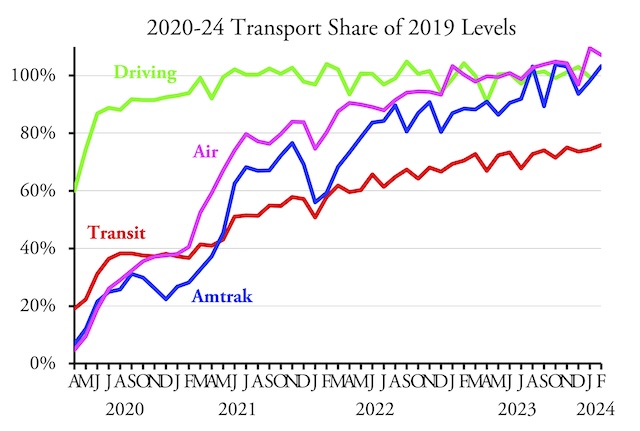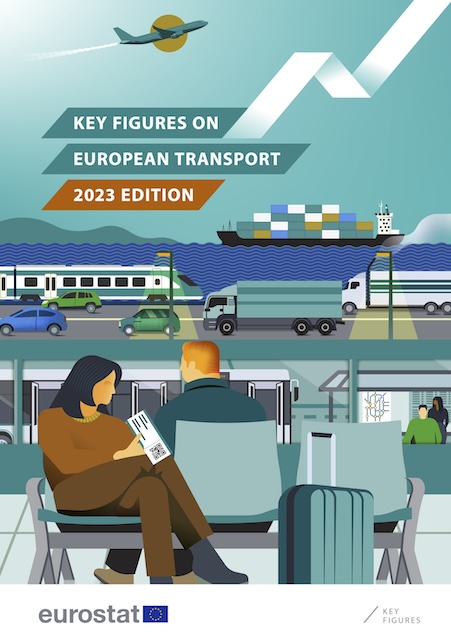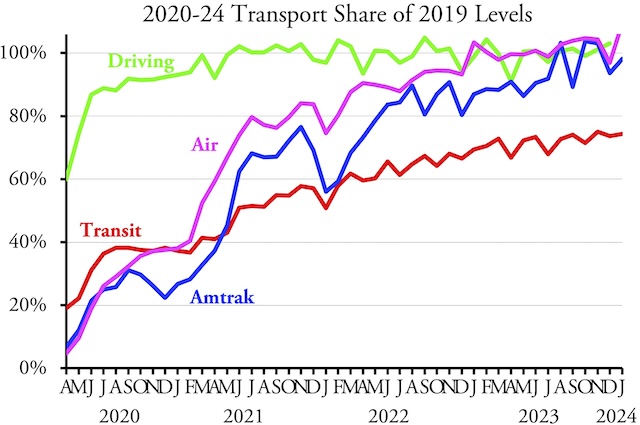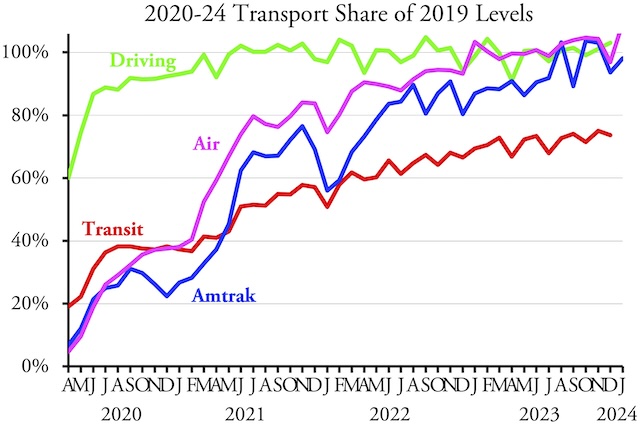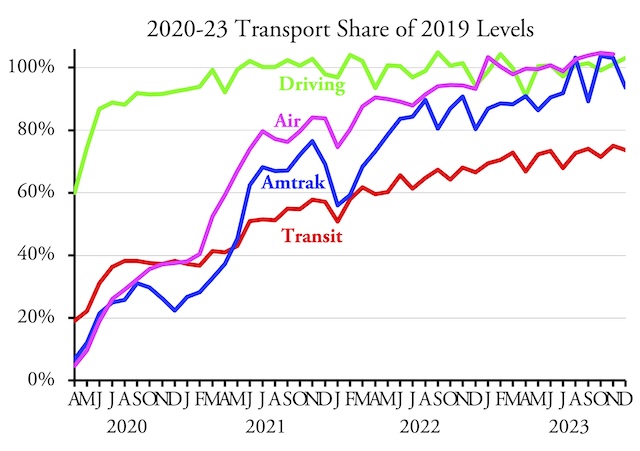Both Amtrak and the airlines have fully recovered from the pandemic. The airlines carried 105.5 percent as many passengers in March 2024 as March 2019, according to data released by the Transportation Security Administration. Amtrak carried 109.1 percent as many passenger-miles in March as in the same month before the pandemic, according to the state-owned company’s monthly performance report.
The airlines have been around 100 percent at least since January of 2023, while Amtrak has been there since August of 2023. Driving data are not yet available for March but driving has been hovering around 100 percent of 2019 levels since July of 2021. March data for transit, the only mode that hasn’t recovered from the pandemic, should be available soon, but I will be on a river trip next week so won’t be able to post those data until the week after.

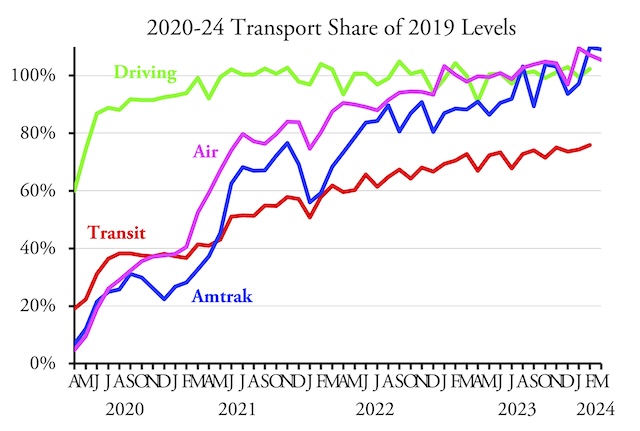
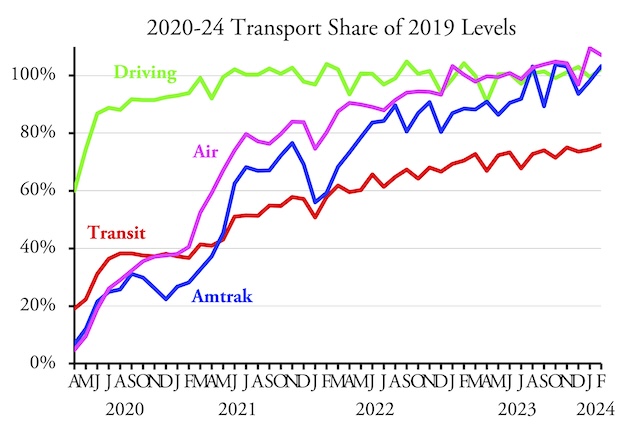 The February 2024 line for driving is obscured by the line for Amtrak, but both are approximately 102 percent.
The February 2024 line for driving is obscured by the line for Amtrak, but both are approximately 102 percent.
